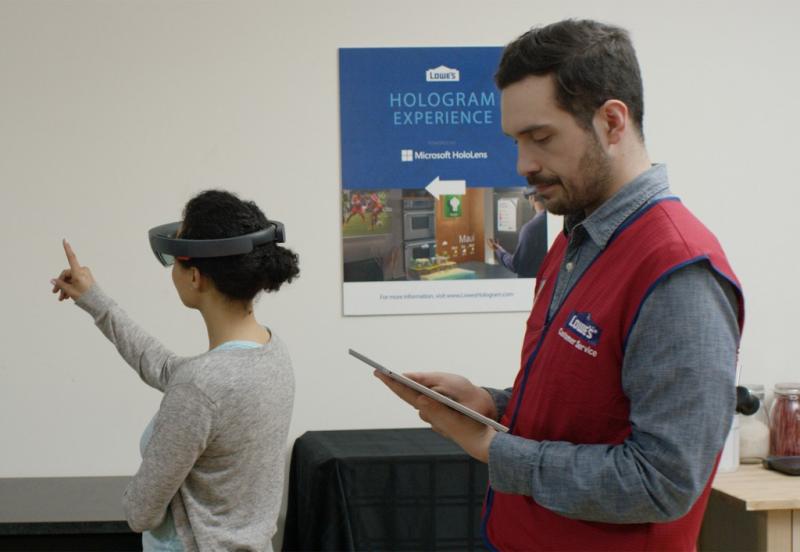Microsoft And Lowe’s Announce Augmented Reality Is Coming To Stores
 If you’re one of my regular readers, you may remember a post from August 2015 – “The Future Of Retail Is Digital” – in which I highlight key findings from a report on the future of retail experience. One recommendation was that retailers should begin to experiment with augmented and virtual reality technology early, so that potential use cases can be piloted in-store. Well this week, Microsoft announced a partnership with Lowe’s to demonstrate the viability of Microsoft’s Hololens to help Lowe’s customers visualize custom kitchens.
If you’re one of my regular readers, you may remember a post from August 2015 – “The Future Of Retail Is Digital” – in which I highlight key findings from a report on the future of retail experience. One recommendation was that retailers should begin to experiment with augmented and virtual reality technology early, so that potential use cases can be piloted in-store. Well this week, Microsoft announced a partnership with Lowe’s to demonstrate the viability of Microsoft’s Hololens to help Lowe’s customers visualize custom kitchens.
While VR/AR is a long way from widespread market adoption (see this March 16 post by J.P. Gownder), the time needed to pilot and experiment with this technology means tech and CX teams in retailers need to be piloting use cases now in order to figure out what, if any, business impact the technology will have. (See also my comments from CES 2016).
Inevitably, the question of ROI will come up as companies consider how these technologies compete for funding. Without real customer use-case testing in-store, it will be difficult to justify any kind of technology rollout at scale. Companies like Lowe’s are getting a head start, setting themselves up to be a potential digital predator if they can figure out how to use such enhanced digital experiences to create more value for their customers that translates into higher sales. While the initial forays into AR may prove of little value, the learning the company gains from such initiatives increases the digital predator DNA of the company. And that’s the difference between becoming a predator or prey.
Previous post: The Digital Transformation Playbook
Next post: Digital Innovation Labs: Do They Inspire?